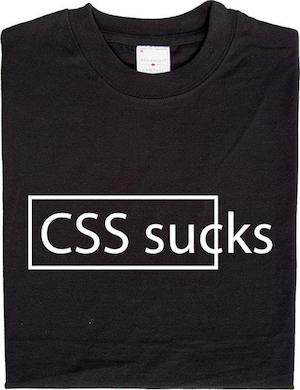Intro to SASS: CSS on steroids
As part of the #WOCO.HK Frontend Series
Hosted by Denis Tsoi
@denistsoi (twitter)
Let's get it started... prerequisites:
- Basic (CSS)[http://pumpula.net/p/apps/css-vocabulary/]

scss is not...

What is scss?
- nested CSS
- variables
- mixins
- arguments (functions)
- extends
- imports and partials
Bonus:
- Indented scss
- compass (scss Extension)
1. nested css
before
body {
/* some css */
}
body div.container {
display: block;
position: relative;
/* some more .container css */
}
body .container .content {}
body .container .content ... more classes {}
now
body {
/* some css */
div.container {
display: block;
position: relative;
.content {
/* content css */
}
.moreclasses { /* more css */ }
}
}
alt
body {
/* some css */
}
div.container {
display: block;
position: relative;
.content {
/* content css */
}
.moreclasses { /* more css */ }
}
but why not just use specificity?
2. Variables
$page-width: 768px;
$cool-blue: #0CA8EB;
body {
width: $page-width;
}
nav li.active {
background: $cool-blue;
}
You can also use math!!!
$size1: 10px;
$size2: 20px;
$size3: 30px;
$totalsize = $size1 + $size2 + $size3; // 60px
$averagesize = $totalsize / 3; // 20px
3. mixins
Mixins are reusable snippets of code (without the use of css classes)
.some-style {
margin: 0;
padding: 0;
line-height: 12px;
font-size: 12px;
font-weight: normal;
/* some more stuff */
}
.some-similar-style {
margin: 0;
padding: 0;
line-height: 16px;
font-size: 16px;
font-weight: normal;
/* some more stuff */
}
<div class="some-style"></div>
<div class="some-similar-style"></div>
so you could do something the following without scss
.some-common-style {
margin: 0;
padding: 0;
font-weight: normal;
}
.some-style {
/* custom css */
}
.some-similar-style {
/* custom css */
}
<div class="some-common-style some-style"></div>
<div class="some-common-style some-similar-style"></div>
but what if you want to minimize the population of css classes in your html markup?
this is where mixins come into play;
@mixin commonstyle {
margin: 0;
padding: 0;
}
.main,
.detail {
@include commonstyle;
}
<div class="main"></div>
<div class="detail"></div>
but reusing the commonstyle mixin above is only useful if the values are predefined...
4. arguments
@mixin commonstyle($padding, $margin: 0) {
margin: $margin;
padding: $padding;
}
.main,
.detail {
@include commonstyle(0);
}
but lets use an earlier example
@mixin font($font-size: 12px, $line-height: 12px, $font-weight: normal) {
font-size: $font-size;
line-height: $line-height;
$font-weight: $font-weight;
}
.main {
@include font;
}
.detail {
@include detail(16px, 16px, bold);
}
5. extends
With extends, you might be working on a css class and later down the line, you want to 'inherit', the styles from a specific class.
You can use @extend .selector such that
.class {
@extend .predefined;
}
.class will be populated with .predefined. This is particularly useful when we use a component based approach to development, such that componentA is able to use componentB where they may not need to use a mixin or import componentA styles.
6. imports and partials
Remember... _filename is a partial,
whereas filename.scss will be compile to a separate scss file
other tips/tricks Using "&" as ' parent' selector...
li{
width: 30px;
}
li:hover {
width: 100px;
}
li {
width: 30px;
&:hover {
width: 100px;
}
}
update
Update:
Since sass 3.x.x, the popularity of using {} and ; notation for scss, the popularity of using scss plays a lot nicer, such that scss isn't as strict when it comes to say, tab spacing.
how to use from cli
There are a few ways to getting started.
From the sass-lang site, you can use the ruby-gem as follows.
sass <input.sass> <output.css>
example:
$ sass input.sass output.css
Watch one file
sass --watch app.scss:public/stylesheets
WATCH DIRECTORY
sass --watch app.scss:public/stylesheets
Update: 2016-12-14
using scss with node options:
- build tool (
buildpack,webpack,gulp,grunt,yoetc) - middleware (
node-quesadilla) - vanilla cli (
sass --watch)
The end
Thanks for reaching thus far, and if you would like to learn more or checkout sass-lang.com for documentation on scss, codepen for inspiration.
Author
Denis Tsoi